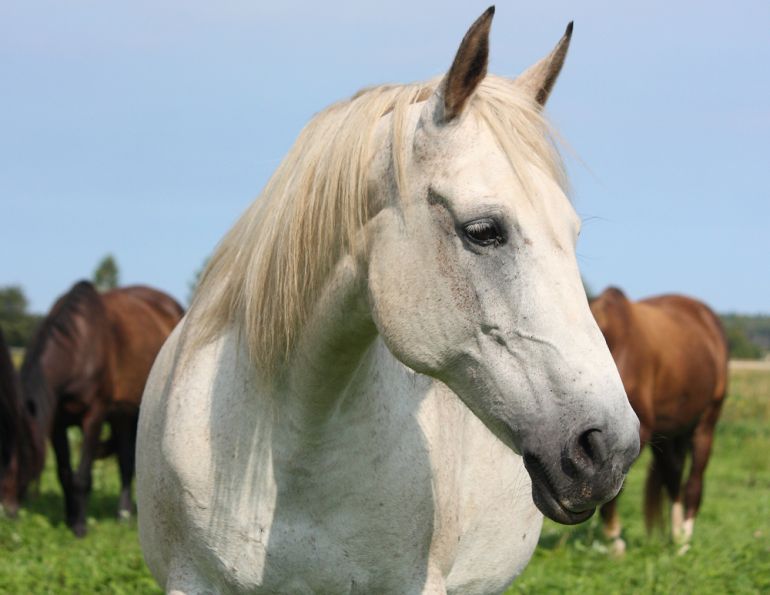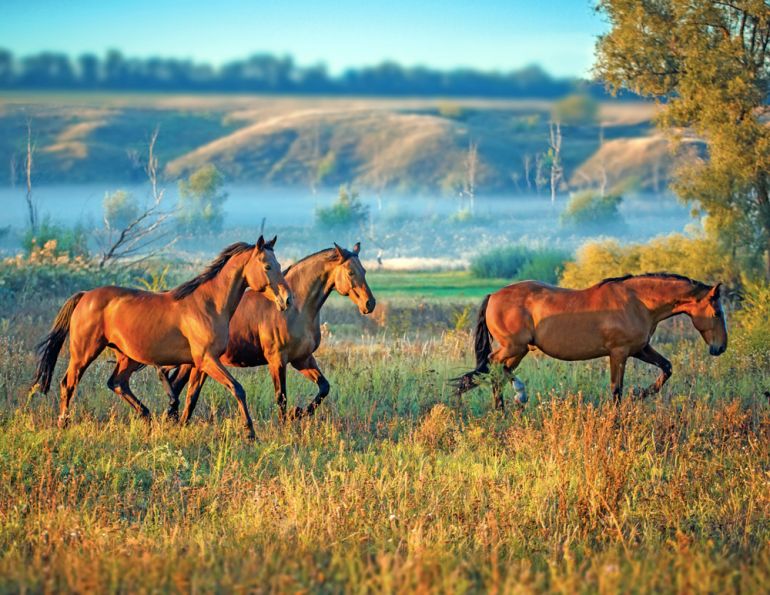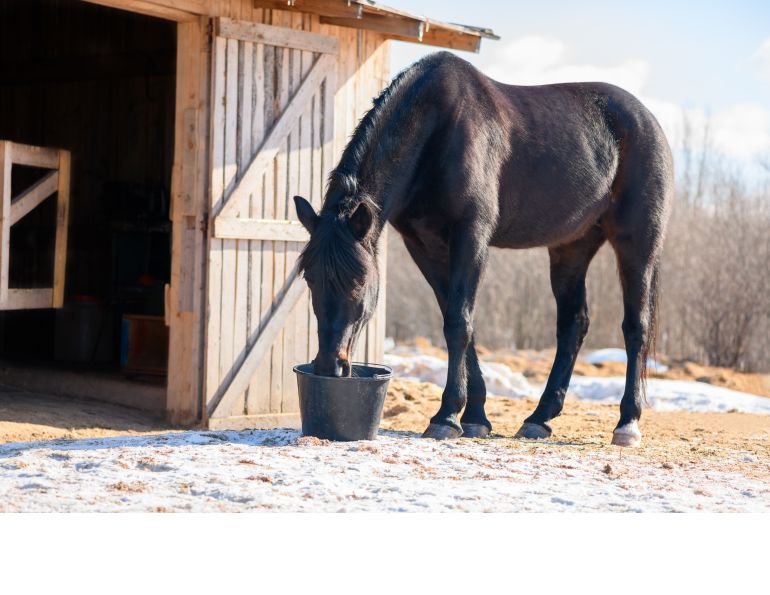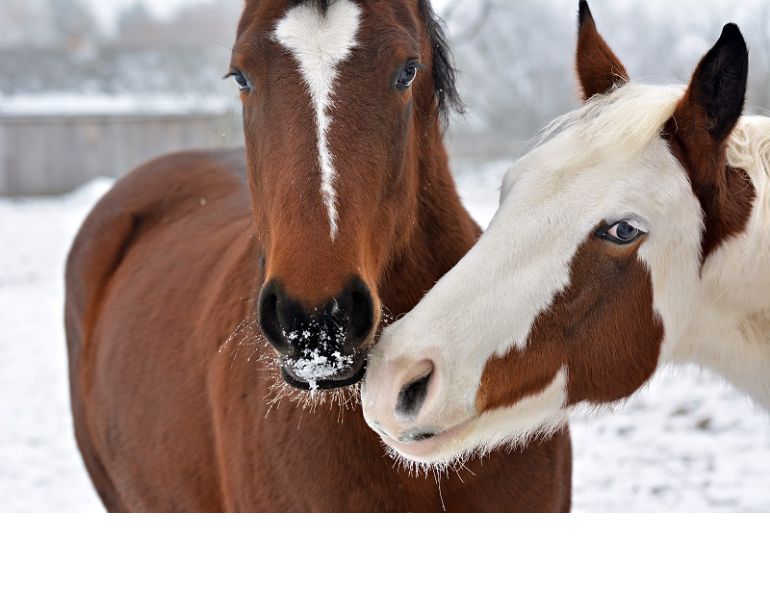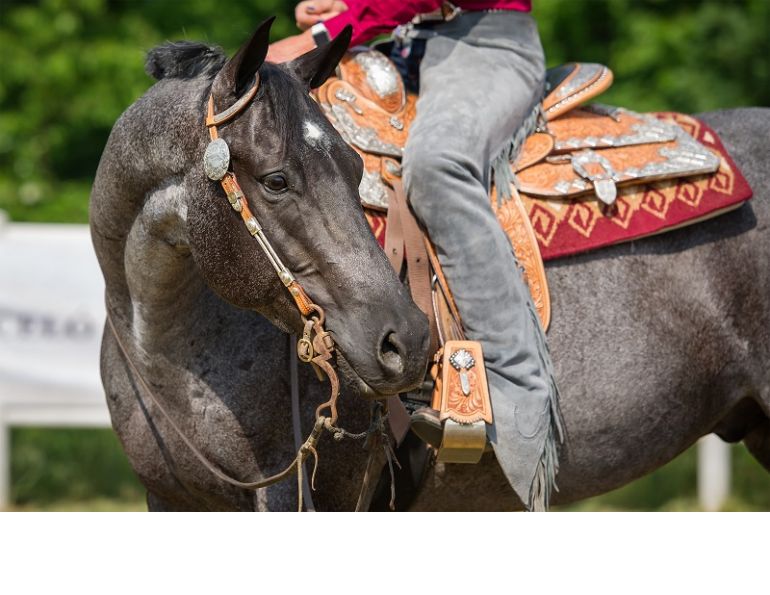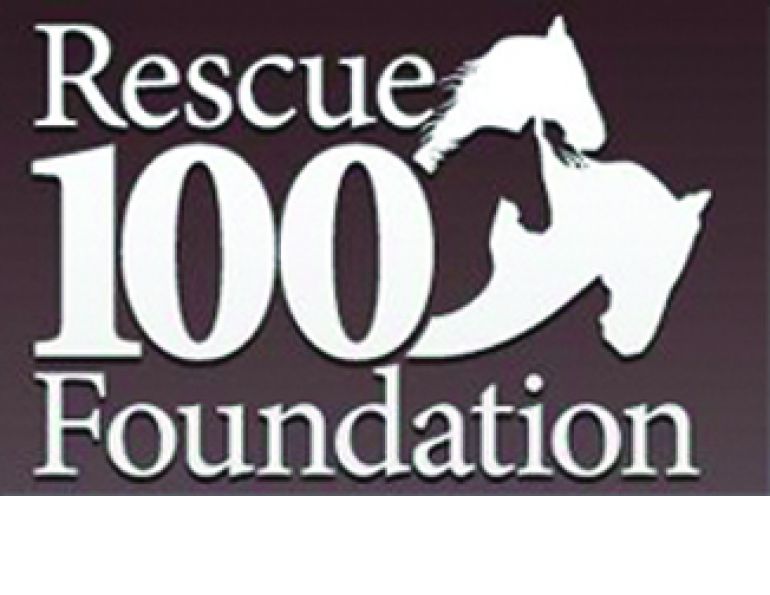Source: Equine Guelph
Winter can make the most mundane tasks challenging. This reality is clearly illustrated when it comes to watering animals. For as long as man has worked alongside horses and livestock, there have been different watering methods and their seasonal variations.
Fresh, clean water is critical to good health, and freezing temperatures can make providing this very difficult. During cold months, the horse’s digestion converts feedstuffs into energy that results in body heat. This process is critical to winter survival. As animals switch from moisture-rich grass to drier hay, water consumption is important not only for hydration but also to keep feed moving through the digestive tract.
Common causes of dehydration in winter include:
- Icy water can be too cold to consume comfortably
- Water source is completely frozen over
- Animals left to survive on snow and ice
- Water is too hot due to improper adjustment on heater
- Water has electric current due to malfunctioning heating element
Cold water is a somewhat hidden cause of dehydration. A study out of Penn State University has shown that increasing water temperature from just above freezing to 4-18 degrees Celsius will increase the amount of water consumed by up to 40 percent – that’s A LOT.
Inadequate water intake for sustained periods has two immediate impacts that are the starting point of bigger problems:
Decreased feed intake – This will have a direct impact on the animal’s ability to maintain body weight as well as decrease their ability to consume enough feed/energy to tolerate the cold weather.
Impaction colic – If a horse doesn’t consume enough water either because it’s frozen or it’s too cold for them to drink comfortably, the risk of impaction colic can rise.
Waterer Options for Winter
Horse and livestock owners have many common and popular waterer options to choose from when deciding what is best for them and their animals. The primary variables that distinguish waterers are permanent versus portable, and electric versus non-electric.
These distinctions are never more pronounced than in the winter months.
Related: Winter Water Woes and Equine Colic Prevention
Winter Watering – Permanent versus Portable
- Buckets (ultra-portable)
- Troughs/tanks (semi-portable)
- Automatic waterers (mostly permanent)
Portable waterers can be up and running instantly. The general rule of thumb, particularly as it relates to watering in the winter, is: The more portable a water solution is, the more likely it will freeze quickly and be expensive to operate (because of electricity consumption). There is also the extra time it will take to check, maintain, and fill.

Heated bucket
Winter Watering – Electricity versus No Electricity
There is no denying that wiring electricity to automatic waterers is considered the norm in some areas. At one point it was a cutting edge breakthrough, then it became the standard, and now there are other alternatives to consider.
There are some definite benefits to utilizing electricity. Waterers that use electricity are typically heating water to prevent it from freezing. This means there is never any training required and implementation can be as simple as putting a heating element inside of a trough or stock tank.
The advantages of electric are its convenience, quick implementation, and that it does not require training.
The disadvantages include the high cost of electricity, the cost and time involved in maintaining heating elements, environmental impact of electricity use, and the fact that a malfunctioning unit could electrocute animals or overheat and cause a fire.
Electric Waterers
Within the electric waterer family there are two main categories:
Water Troughs with Submersible Heating Elements – Horses have been known to chew on submersible heaters or play with them and knock them out of their water source. Horseplay can lead to situations that are hazardous. Frayed wires or a malfunctioning unit can lead to an electric charge in the water, or worse, a barn fire. This is why it’s imperative to check this style of heater daily.
Related: Winterize Your Horse Barn
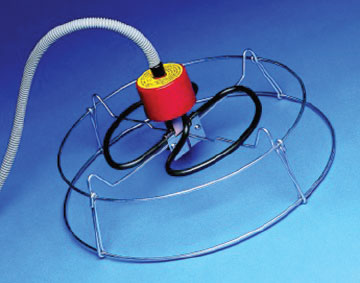
Submersible heating element
Operating costs are the other major downside to this solution. Submersible heaters are an expensive method to prevent frozen water during the winter.
Automatic Heated Waterers – This is the more permanent automatic waterer. The electricity provided to this unit is typically run underground and comes up from underneath the unit. Typical characteristics of this style of waterer include a bowl with standing water controlled by a float valve (like in the back of a toilet). When the water drops below a certain level, the valve opens, and the water is replenished.
The water standing in the bowl is heated to prevent it from freezing. The nice thing about this solution is that you can always see if there is water in the bowl by visually inspecting the water source. However, due to some of the risks outlined above, it’s not a bad idea to physically inspect the water source to ensure the water is not too hot, or possibly carrying an electric current.
While convenience of use is the major upside with this option, what it gains in convenience it loses with cost and maintenance. Because there is standing water, you will usually need to scrub algae and/or growth from these units regularly. In addition, in low use scenarios, the water will become stagnant or spoiled with dirt, manure, or debris.
When deciding on a waterer, it is important to note the monthly heating costs of automatic and submersible heated waterers in addition to their upfront cost.
Non-Electric Waterers
Non-electric waterers encompass a wide range of options. Historically, energy-free often meant the waterer would use some type of insulation or thermos-type strategy to keep water from freezing. Almost assuredly, these waterers also came with a minimum head count because if not used enough, the units will freeze.
The essential principle behind traditional non-electric waterers is to insulate everything above the frost line and keep the water moving enough that it will not freeze.
These types of systems can be a good fit if you are servicing 50-plus head of animals. However, if that does not describe your situation, this style of waterer has a tendency to freeze in situations with less than 20 animals. Also, if you want to leave the waterer unused for days or longer, you can almost guarantee a thermos-style waterer will have issues in freezing temperatures if it’s not getting regular use.
Related: Winter Horse Care Tips
Frost-Free Automatic Waterers
This style of non-electric waterer has a wide range of advantages. The distinguishing factor with this type of waterer is that all unused water drains out below the frost line after every use. This means no electricity, no insulation, no minimum head count, and no algae growth.
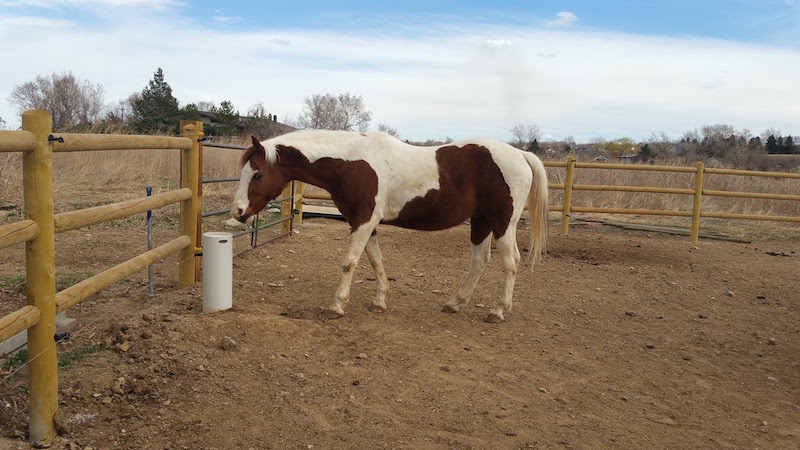
Frost-free automatic waterer
Frost-free automatic waterers are the best-suited and least known style of waterer for head counts of one to 50 animals. Each individual unit can handle 20 to 25 animals.
In addition to the health benefits to the horses, the additional benefits to the caretaker during the winter months include:
- No breaking ice in troughs or buckets
- No refilling buckets or troughs in cold weather
- No unnecessary energy costs associated with heating water all winter
- No special installation requirements for cold climates
With frost-free automatic waterers, the animal walks up to an empty bowl, presses the paddle, and water come up from the valve located below the frost line. For climates with a four-foot frost line, you could install an eight-foot post, with six feet buried in the earth, and two feet above grade. This way, when the animal activates the waterer, the water comes up from five feet below grade. This ensures the unit remains frost-free through the coldest of temperatures without the need for electricity.
Watering animals in the winter is drastically different than in the warm summer months. There are some real trade-offs to consider between cost, convenience, and quality.
When planning for medium- to long-term use scenarios, most will find the frost-free automatic waterer superior because it delivers higher quality water without any electricity costs.
For farms with more than 50 animals, either traditional non-electric waterers or multiple frost-free automatic waterers may be the best option.
For short-term installation (a couple days or weeks), the convenience of heated buckets or troughs will likely prove to make the most sense.
Take the time to evaluate which option would be best for you, your farm, and your animals.
Encourage drinking. Drinking tends to decrease with the onset of colder weather, which can lead to dehydration and colic. Heating water is one way to create incentive for horses to consume more H2O.
Related: Key Factors for Keeping Horses in Winter
Equine Guelph thanks System Fencing for this article on heated water options.
Reprinted with the kind permission of Equine Guelph.







